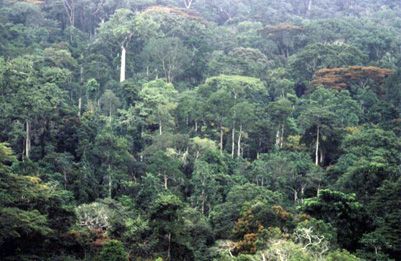
ENVIRONMENT
22-11-2022 by Leni Frau

Perhaps we have not struggled in vain. And we are not just talking about us, small and uninfluential foreign enthusiasts, but about Kenyan conservationists, biologists and nature lovers for whom saving even one of the hundreds (and every day fewer and fewer) of Kenya's baobabs means breathing a little better from the heavy air of this selfish and self-destructive society.
The news is that after years of appeals, petition drives, dossiers and other forms of awareness raising, Kenya's President William Ruto has publicly decided to clear the air, stop and eventually regulate the daily murder of Africa's iconic plants.
It took an egregious episode, namely the uprooting and transport of one of the oldest specimens on the coast, a huge thousand-year-old baobab tree in the hinterland of Kilifi, to bring attention to a very serious problem that we at malindikenya.net have been reporting for years: baobab trees are being cut down to make room for construction, or to free up space in fields for cultivation, and now they are also being sold to foreign entrepreneurs who want to try to transport them on ships to Europe and replant them in their lush gardens filled with plants from all over the world.
That is, for example, what a Georgian millionaire has done in Kilifi County, where there is the most important concentration of ancient baobab trees in the country.
"Someone is allegedly digging up and selling ancient giant baobab trees in Kilifi County. Please can you investigate and stop the destruction of our trees," Paola Kahumbu, one of Kenya's leading conservationists, said on social media.
After three days came a response, via twitter, from President Ruto, who asked the Ministry of Environment to investigate the situation, because every tree is sacred and new ones should be planted, not historical ones cut down.
"There must be proper authorization and a fair benefit-sharing formula for Kenyans. Also, the operation must be in line with the government's plan to plant 15 billion trees in the next 10 years," Ruto said.
In fact, the problem is not so much the (very few) Western millionaires, because as Georgian George Gvasaliya reminded us, Kenyans on the coast are quite happy to sell their baobabs earning 1,000 to 3,000 euros per tree as a minimum hundred years old. Not least because many of them would cut them down anyway, claiming that they consume a lot of water and do not help crops especially in times of drought.
In reality, baobabs have many qualities and benefits that new generations in Kenya have forgotten, starting with the hypervitaminic fruits and the powder they yield that in times of past famines saved mothers and children of entire generations. Not to mention the handicrafts that can be made from the fiber and shells.
Baobabs provide a habitat for many species of insects, reptiles and birds, and the younger ones contribute along with the rest of the ecosystem made up of even small hints of forests, to provide microclimates that help humans survive. It is no coincidence that in the areas where most Kenyans are deforesting, drought is even more evident.
In short, in our many videos we have told you all about this, now the hope is that the voice that has finally reached the highest echelons of government, will give birth to firm rules for the preservation of Africa's "grand old men," and above all that these rules will be enforced, which is always the hardest thing.

ENVIRONMENT
by Leni Frau

By the end of March, replant the trees uprooted to build the Nairobi elevated expressway. This is the diktat...
ENVIRONMENT
by redazione

A laudable and life-saving initiative by a group of conservationists and nature lovers, including...
ENVIRONMENT
by redazione

The efforts made so far to ensure water to Tsavo National Park and its ecosystem may not be enough.
The closest savannah to the Kenya coast threatens to extinction in 15 years unless seriously created irrigation systems and new dams.
NEWS
by Freddie del Curatolo

Kenya's baobabs are inevitably destined to disappear unless the new government takes timely and necessary countermeasures...
ENVIRONMENT
by Freddie del Curatolo

That we wouldn't make it was almost written.
Only a...
NEWS
by Leni Frau

Colder-than-usual temperatures in July on the Kenyan coast and a decrease in the flow of...
FREDDIE'S CORNER
by Freddie del Curatolo

At first sight, the trees of Takaungu seem to project a 'fantasy' scenario to the...

The world begins to discover the amazing properties of the African tree par excellence, the baobab.
The thousand-year-old ...
ENVIRONMENT
by Leni Frau

What poachers do not do, unsustainable progress does.
Three...
ENVIRONMENT
by Freddie del Curatolo

There are no less than 17 Italians among the three hundred volunteer 'angels' who contribute to...
EVENTS
by redazione

This year Freddie of the Curatolo chose children as a public to tell her stories of Kenya, between nature, solidarity and fun moments.
They are elementary schools, especially quarters and scenes, listening to stories that go from baobab to schools...
EVENTS
by redazione

An event of traditional coastal music, folk dances and other activities in the shade of one of...
NEWS
by redazione

A sigh of relief for the many Malindians who still believe in legends and who do not want baobabs, representing the souls of dear dead, to be cut off.
Malindi's "talking" baobab, Mbuyu Wa Kusema, will not be cut to...